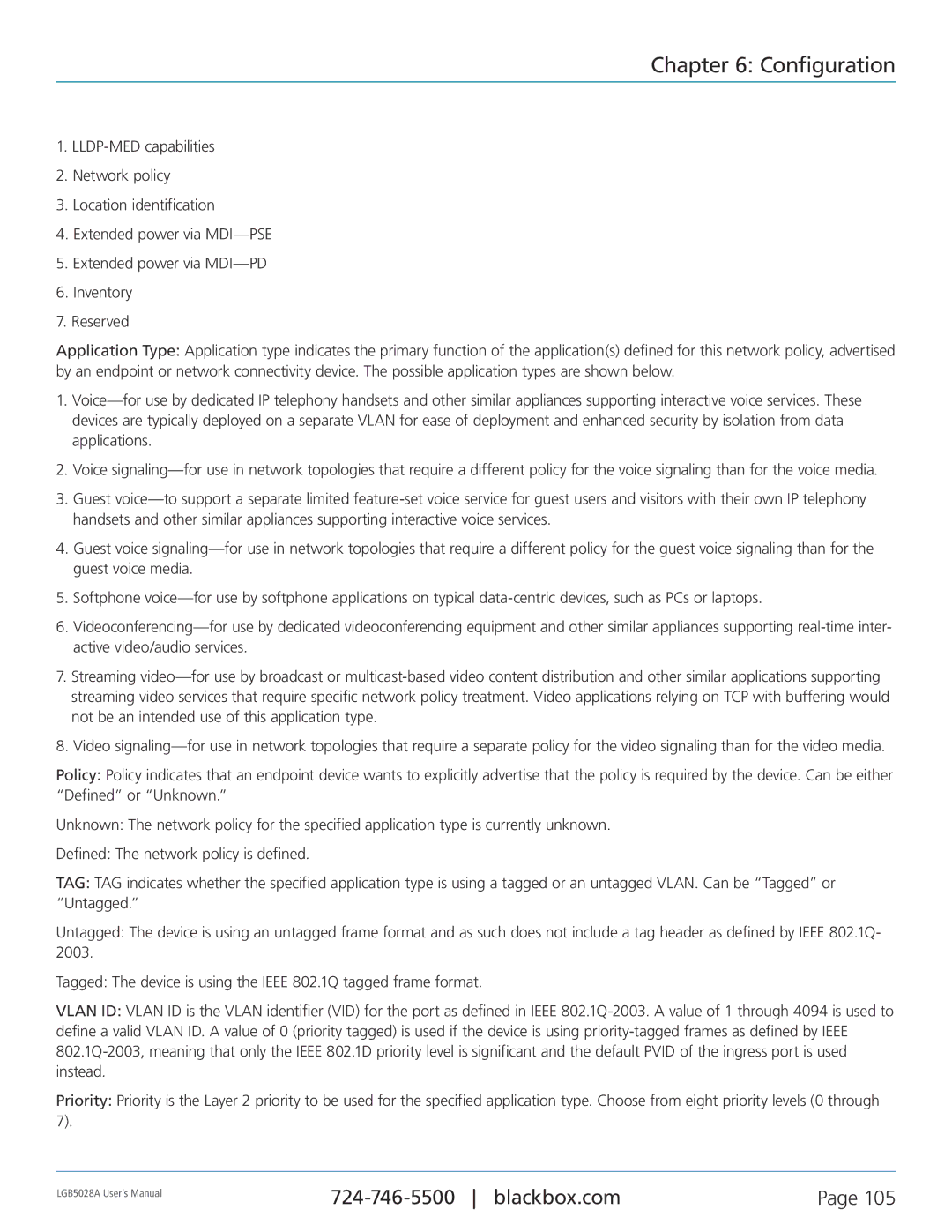Chapter 6: Configuration
1.LLDP-MED capabilities
2.Network policy
3.Location identification
4.Extended power via MDI—PSE
5.Extended power via MDI—PD
6.Inventory
7.Reserved
Application Type: Application type indicates the primary function of the application(s) defined for this network policy, advertised by an endpoint or network connectivity device. The possible application types are shown below.
1.Voice—for use by dedicated IP telephony handsets and other similar appliances supporting interactive voice services. These devices are typically deployed on a separate VLAN for ease of deployment and enhanced security by isolation from data applications.
2.Voice signaling—for use in network topologies that require a different policy for the voice signaling than for the voice media.
3.Guest voice—to support a separate limited feature-set voice service for guest users and visitors with their own IP telephony handsets and other similar appliances supporting interactive voice services.
4.Guest voice signaling—for use in network topologies that require a different policy for the guest voice signaling than for the guest voice media.
5.Softphone voice—for use by softphone applications on typical data-centric devices, such as PCs or laptops.
6.Videoconferencing—for use by dedicated videoconferencing equipment and other similar appliances supporting real-time inter- active video/audio services.
7.Streaming video—for use by broadcast or multicast-based video content distribution and other similar applications supporting streaming video services that require specific network policy treatment. Video applications relying on TCP with buffering would not be an intended use of this application type.
8.Video signaling—for use in network topologies that require a separate policy for the video signaling than for the video media.
Policy: Policy indicates that an endpoint device wants to explicitly advertise that the policy is required by the device. Can be either “Defined” or “Unknown.”
Unknown: The network policy for the specified application type is currently unknown.
Defined: The network policy is defined.
TAG: TAG indicates whether the specified application type is using a tagged or an untagged VLAN. Can be “Tagged” or “Untagged.”
Untagged: The device is using an untagged frame format and as such does not include a tag header as defined by IEEE 802.1Q- 2003.
Tagged: The device is using the IEEE 802.1Q tagged frame format.
VLAN ID: VLAN ID is the VLAN identifier (VID) for the port as defined in IEEE 802.1Q-2003. A value of 1 through 4094 is used to define a valid VLAN ID. A value of 0 (priority tagged) is used if the device is using priority-tagged frames as defined by IEEE 802.1Q-2003, meaning that only the IEEE 802.1D priority level is significant and the default PVID of the ingress port is used instead.
Priority: Priority is the Layer 2 priority to be used for the specified application type. Choose from eight priority levels (0 through 7).

